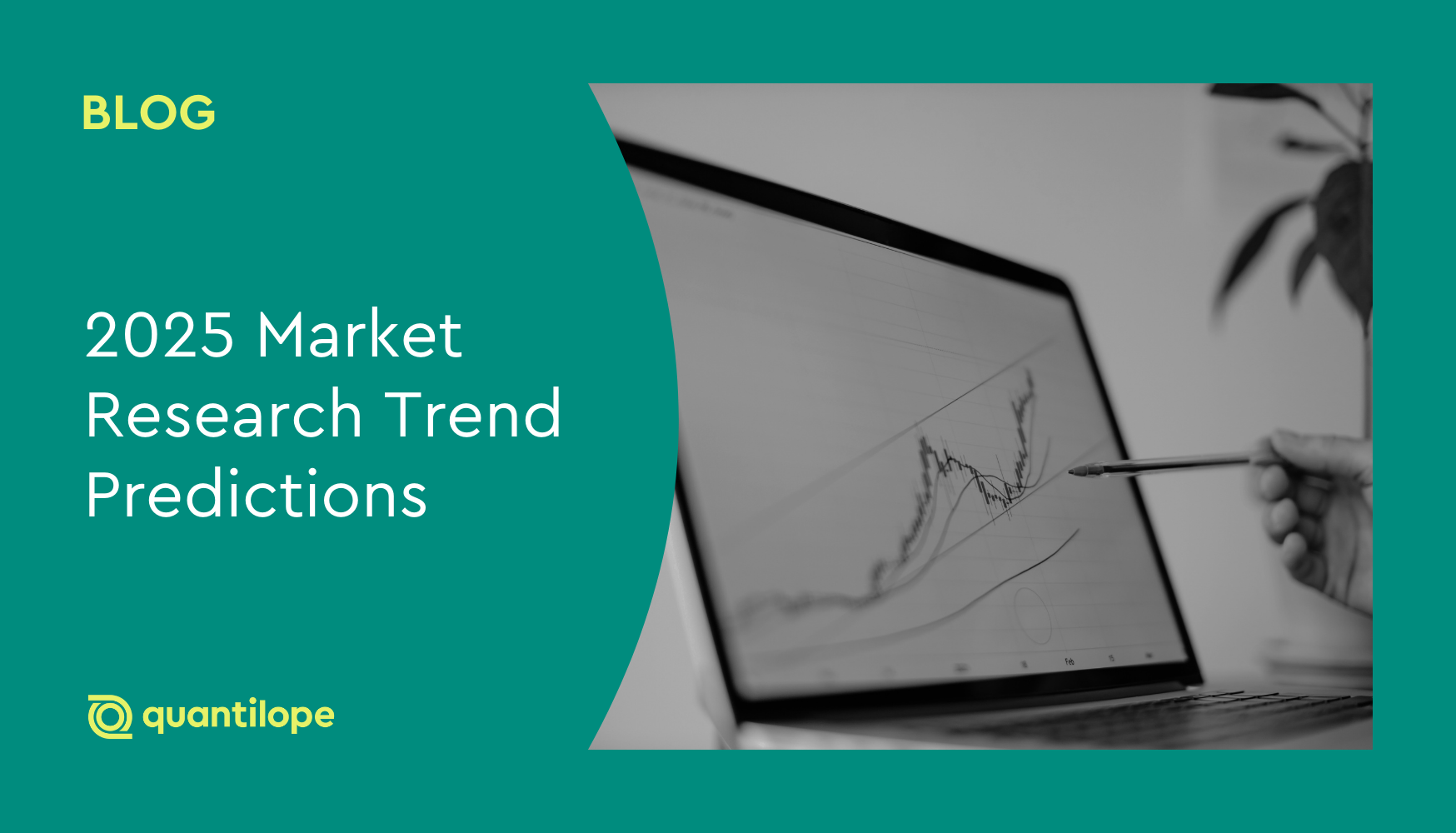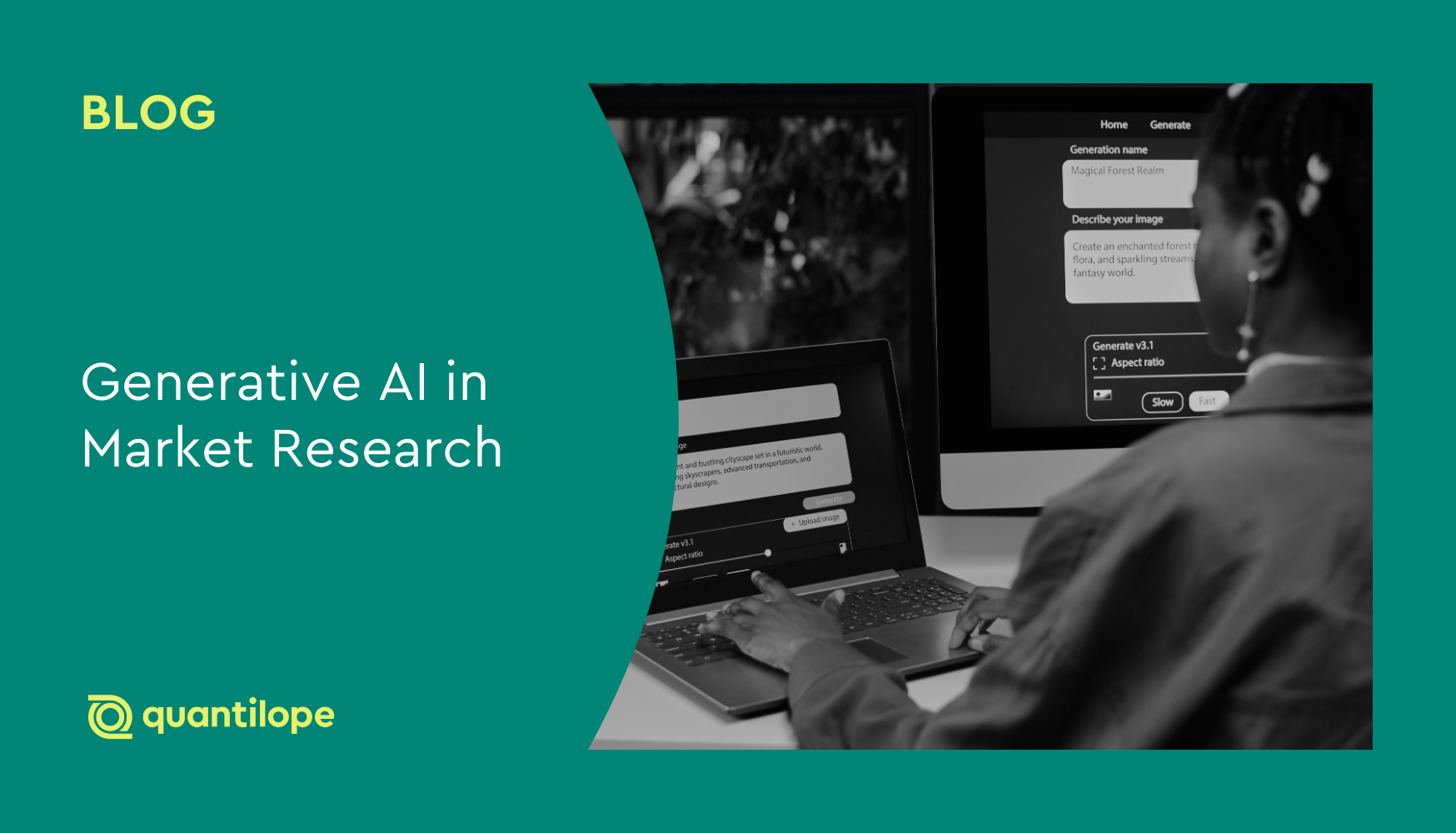In this blog, we will look at what market research trends businesses can expect throughout 2025, and why they should be keeping a close eye on them.
Current market research industry trends
The market research industry is currently experiencing several key trends that are reshaping how businesses gather consumer insights. AI-powered analytics and automated social listening have become standard for capturing faster, more reliable data, while mobile-first survey design and enhanced data quality measures are now essential priorities. Additionally, there's been a significant rise in agile in-house research teams as businesses seek greater control over their insights process through automated platforms and solutions. This technology-driven transformation reflects the industry's shift toward more efficient, actionable research methods. Modern researchers are leveraging automation to streamline data collection and analysis, allowing them to focus on strategic interpretation and business impact rather than manual processes.
Table of contents:
- Automated platforms for in-house research
- AI co-pilots and machine learning
- Better Brand Health Tracking
- Video feedback
- Advanced methods as table stakes
- Conclusion
Any business interested in maintaining relevancy and generating growth should stay up to date on current research methods, technologies, and trends.
Here are the top five trends businesses should expect (and act on) in 2025:
1. Automated platforms for in-house research
Traditional means of research (i.e. agencies that have been around for decades with little change to their research approach) no longer serve businesses that are trying to act at the speed their consumers are moving. Automated end-to-end platforms are slowly replacing these traditional agencies, as more and more businesses learn about the power of hands-on platform research. With these platforms, insights leaders (and their teams) have more direct control over their studies and can get much more done in a quicker timeframe. Even a comprehensive brand tracking survey that once took weeks to complete can now be wrapped up in a matter of days.
Forrester Consulting's Total Economic Impact study found that quantilope's Consumer Intelligence Platform provides an ROI of 319% over three years and $2.7 million in net benefits; as the demand for more consumer insights rises but timeframes and resources decline, these metrics are hard to ignore. Brands can either stick with their traditional agency partners and sacrifice time and money, or, bring their research in-house with a DIY platform - without having to sacrifice any quality or aspect of their research process.
Further, the benefits of an automated platform extend far beyond the insights team directly using it. With automated platform insights, marketing teams get brand insights quicker and stakeholders can make informed decisions faster. Platforms create a central place for research findings that make navigating those findings a simple and iterative process. With access to platform projects and data sets at any time, teams across a company can instantly connect the dots between their different research projects to understand cross-functional relationships; this fosters a more connected way of thinking and collaborating.
2. AI co-pilots and machine learning
Whether you're tired of hearing about it or not, AI is not only here to stay...it's escalating at a rapid pace. AI co-pilots and machine learning in market research offer an exciting opportunity for researchers to make better business decisions, even without an advanced research skillset. Whether conducting brand tracking or one-off studies, AI co-pilots are closing the researcher skill gap by instantly analyzing, charting, and reporting on research findings.
Where researchers used to have no choice but to manually draft, program, and quality check a research project, AI co-pilots and machine learning software now do the heavy lifting. quantilope's AI co-pilot, quinn, is a collaborative research partner available to platform users throughout their end-to-end project. From offering suggestions for advanced method inputs, to drafting chart headlines and summarizing reports, research teams gain a new member of their team without having to put them on payroll.
In 2025, AI co-pilots like quinn will change the game for researchers looking to get more done with fewer resources. Other exciting AI tools like Open AI's Chat GPT and Google's Gemini can further aid in helping researchers come up with question phrasing, survey input ideas, and other necessary content for their study. AI co-pilots won't replace the need for human researchers, they'll simply assist them in making better business recommendations.
Back to table of contents
3. Better Brand Health Tracking
Brand health tracking is one of the best ways brands can stay relevant and act on consumer insights in as close to real-time as possible. While measuring brand equity remains crucial, traditional brand health trackers haven't changed much over the years - focusing almost solely on brand funnel metrics (brand awareness, brand consideration, and brand usage). Today's businesses need to know how to measure brand value effectively; they need to know what's bringing consumers to shop in their category in the first place and which brands are coming to mind in those buying scenarios.
To solve for this, Jenni Romaniuk of the Ehrenberg-Bass Institute came up with Better Brand Health. This approach will become the new standard for brand health tracking - and many have already jumped on board (quantilope included).
Better Brand Health Tracking (BBHT) provides brands with several modernized metrics that go beyond the basic funnel. These are known as Mental Availability metrics and describe a brand's (and competitors') mental market share, mental penetration, share of mind, and network size. The solution also includes Mental Advantage analysis which is an intuitive way of looking at brand associations across competitors.
Back to table of contents
Learn more about quantilope's approach to brandhealth tracking, leveraging Category Entry Points and Mental Availability:

4. Video feedback
Think about how often your phone is in your hand or in close proximity throughout the day. We don't go anywhere without our phones. We use them to communicate with others, search online, share moments on social media, and so on. Brands can take advantage of this by incorporating video feedback into their market research strategy.
In 2025, we'll see a rise in video feedback at scale. While video research is nothing new - with online focus groups being used here and there as a supplement to quantitative research, we predict video research will become much more standard practice in 2025 and beyond.
Consumers today are much more comfortable talking to a screen and recording themselves than in the past (we have TikTok and Instagram reels to thank for that). This is a huge benefit for brands, who can now capture consumer feedback in their own voices, analyzing their body language and sentiment, and ensuring their feedback is genuinely from their point of view, rather than from an online survey bot. Video feedback allows for detailed insights, and an opportunity to 'read between the lines' based on their mannerisms and expressions.
While video feedback generally isn't as fast or streamlined as online quantitative questionnaires, there are tools that are making video research efficient with built-in analyses and showreel functionality (like quantilope's inColor solution). This also feeds into our final prediction for 2025, where brands are going to opt for higher quality research over quantity.
5. Advanced methods as table stakes
Brands in 2025 are going to opt for higher quality research to make the best business decisions possible, without having to sacrifice quantity or speed. For some, this might mean trading in their sporadic, high-volume ad-hoc studies for a richer brand health tracker or a single study with multiple advanced research methodologies. Brands that make this shift will be left with much more actionable insights or with insights that keep building on one another for a greater consumer story over time.
One example of how advanced insights generate more action than standard usage and attitude data is quantilope's descriptive vs. advanced method insights study in the grocery space. In this study, quantilope shows how basic U&A data only scratches the surface of understanding a category, and might even leave you with more questions than answers. Though U&A studies might be quicker and easier to implement with traditional agencies, quantilope makes advanced method research accessible to researchers of any skillset, just as fast.
The best automated platforms offer a broad range of research methodologies and allow users of any skillset to smoothly conduct different study types with any level of complexity. Look for these elements when choosing an automated research provider in 2025.
Back to table of contents
Conclusion
Throughout 2025 and beyond, businesses will need market research solutions that can highlight where new opportunities lie and how they can grow. They'll look for platforms that are automated, offer AI tools and Better Brand Health Tracking, can implement video research at scale, and offer the highest quality advanced method insights without sacrificing speed.
quantilope brings the entire end-to-end consumer research process into its Consumer Intelligence Platform for simple and intuitive advanced survey development, panel-agnostic sampling, and AI-assisted chart analysis and dashboard report creation. The speed and automation of the platform allows businesses to monitor data in real-time, with final results in a matter of days. Throughout the rest of the year and beyond, quantilope will continue to expand its AI co-pilot's offerings and platform capabilities to make automated, advanced research non-negotiable for researchers who want to generate impact for their organization.
To learn more about how quantilope can help achieve your market research goals for the remainder of the year, get in touch below!



.png)
